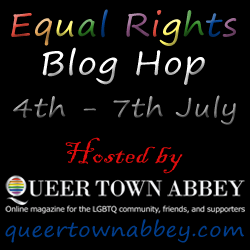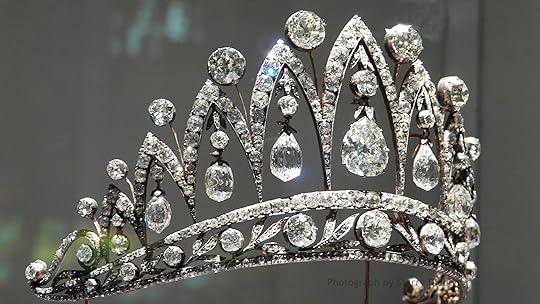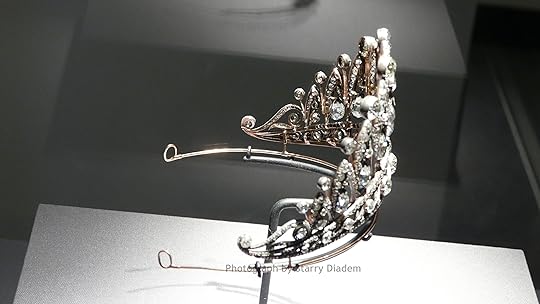Anna Butler's Blog, page 48
June 26, 2013
Equal Rights Blog Hop July 4-7
June 21, 2013
Yaay! New chapter – and action scenes
I’ve started work on the second Shield novel. The prologue and Chapter One of Heart Scarab is done, and yaay! for progress…
But equally, it’s got me thinking hard about how to write action scenes so they aren’t all a sequence of breathless ‘and then and then and then…”.
The point of an action scene, it seems to me, is to get the reader inside the PoV character’s head and pull them in so they’re meshed in the tension, and they don’t start breathing again until the scene is over. They should have, in some small measure, a share in the reactions of the PoV character – in this case, Lt Rosamund, Bennet’s second in command.
She’s a capable and experienced Shield warrior, so it isn’t going to be a panicked reaction when the Maess fighter screams overhead (oh, what a cliché! ) and starts firing. She’s been there before. But it’s still a tense and rapid experience. She’s running to herd civilians to safety, and then she’s running from one shattered body to another, trying to find the living and get them out. She’s out of breath and covered in blood, and her head’s singing with the adrenalin rush. She’s in it, right in it, and she has to pull the reader in with her. So, when I revise this, there has to be something of the same urgency in the prose. Short breathless sentences, nothing long winded and elegantly structured. She won’t have time for that. Sounds, smells, sights, touch, taste–all of those have to be involved too. The sound of the laser sabots overhead, the air tasting of fire and brimstone, the smell of blood, the sight of another woman, dead, body curved protectively and uselessly around a child’s, her back an open, bloody mess, the feel of Grant’s spine against he arm as she braces him on the transport while Bennet wraps the remains of Grant’s left hand. All to be sharp, short, urgent.
I am pants at writing action scenes. I do despair that I’ll ever get it right.
What’s your tip for writing action? What works for you?


June 19, 2013
Submissions to publishers
I’ve finally got around to writing the synopsis for Gyrfalcon (next post!) in readiness for the UK GLBTQ meeting in Manchester next month, where I hope to get the chance to pitch it to publishers.
Now, these pitches will be verbal and I’m debating about what to take with me to give them to supplement that. A flashdrive with the synopses and the first three chapters of Gyrfalcon – well yes, I can do that, and maybe that’s the best solution since most of the publishers are coming from the US and won’t want to carry bulky papers around with them. But seriously, that’s also expecting them to bear the brunt of printing out my immortal works, and that doesn’t seem right. It feels presumptuous and rude. I suppose I could take the flashdrives *and* some printed copies and give them the option on which they may like to take away with them if they’re interested. Should I just offer to email and post the story to them after the event and hope they remember who the hell I am when they get home? And isn’t assuming that they will be interested enough to want to see the chapters also presumptuous and rude? Yet if I’m not prepared to push and try and sell Shield, then no one else will and I have to have faith enough in what I’ve written to do that pushing.
Ai, the dilemma!
Advice then, please. If you’re doing a pitch to a publisher who’s visiting from their native country and therefore will have limited luggage space to take home everyone’s pitches, how would you do it?


June 17, 2013
FlashWired
Well, that was nice. I got a very pleasing review of FlashWired over at Goodreads. I’d rather given up on the story after the stinker of a review on Amazon, so it was a very pleasant surprise to get this from a Goodreads user called Ilona:
“This was a well written story with interesting characters and a very unusual alien encounter but.. and it’s a big but… it wasn’t really a good ending for me, hence the mark down to a 4*. On the other hand I would love to read something a little longer from this author as she definitely has a way with words and that makes for an interesting and intriguing read.”
I’m not surprised about the reviewer’s comments on the ending, though. It isn’t a conventional HEA – nothing I write is! – and I do understand that for some people that’s a deal breaker, and for others it seriously affects their enjoyment. FlashWired’s ending is ambiguous. It’s up to the reader to decide if one day, some day soon, Cal will feel Jeeze’s fingers tightening in his, and Jeeze will wake up and realise just what he’s been missing…
http://www.goodreads.com/review/show/642945841
Thank you, Ilona, whoever you are. You made my day today. And after three hours of struggling with DirectGov online to renew my mother’s disability parking badge, I needed that little lift to the spirits.


June 11, 2013
Writing a synopsis of your immortal work
This was the post I intended to make before I got diverted by the sparklies. By the way, if ever you feel the need to divert me, let me assure you you’ll have *no* problem if you dangle a diamond or two before me.
But in the absence of diamonds, it’s back to writerly things and writing a synopsis of your novel.
I spent the weekend helping a good friend, M, do synopses (synopsi? synopsopodes?) of all six of the series of novels she’s taking with her to Vegas at the end of the month to the Western Writers of America meet. M has an agent interested, who wants not only the first book to read at the meet but the synopses of the following books. I didn’t begrudge the time doing it because I need to do exactly the same thing with the Shield series, for the LGBT Writers Meeting at Manchester next month. I hope to corner a… I mean, have 1-to-1s with publishers there and I need to go into those meetings focused on what Shield is about, and sell it. Helping M with hers ended up being a dry run for mine.
Have you ever tried to write a synopsis before pitching to a publisher? And did you, like me, discover it’s harder than it looks?
Sure, writing a synopsis is easy, until you read it over afterwards and realise it’s all and then, and then, and then this happened, and then that went on…
And then (ha!) you conclude, gloomily, that the synopsis is so boring your dentist could use is as an alternative to anaesthetic while he extracts half your teeth. There is no way in hell that a publisher would look at it and get past the first paragraph. Not unless he or she’s an insomniac, and even then they’d have to have been sleepless for a week.
So I did a little bit of hunting around via trusty old Google (who wouldn’t *dream* of letting the US government know what I’ve been researching, no sirree). And I found a how-to writing site by Glen Strathy, whose approach is so unusual that M and I blinked, stared, and gave it a go.
Strathy suggests that the problem with synopses of the type most people write (that is, the boring and-then-and-then species) is that writers get so bound up in the events of their novel, they forget to include the crucially important bit: its emotional heart. “The secret of how to write a synopsis,” says Strathy, “is to incorporate the emotional twists and turns of your characters – especially your main character – at the same time as you describe your sequence of plot events.”
So, saith the sage, go and get hold of a set of index cards, answer sets of questions, shuffle the resultant cards into four piles and there you have it: the outline of a compelling synopsis that includes the emotion, the growth your character makes, the impact on him or her of the other characters, the sacrifices he makes and the rewards she reaps… a true synopsis of your book that will set it apart from the rest and make the publisher long to read the whole thing.
Hang on.
Index cards. Index cards? You mean… paper? Paper and a pen and, you know, handwriting?
Whoa, but he did. M and I were dubious, but game to try something new. So in lieu of index cards, we cut 5″x8″ photographic printing sheets in half and used those. Expensive, but all we had. Besides, M said she never printed out her photos anyway.
And we started. First set of cards was the boring events stuff. Four cards – (1) the event that kicks everything off, (2) events that illustrate opposition to the story goal (yup, go back and write the story goal, people – you’ll need it later), (3) the climactic scene where that goal is met or not, and (4) the aftermath. There you go, the first card in each of the four piles.
Then grab your main character by the scruff of the neck and shake him until you can answer four questions about him (or her) too. (1) what he’s like at the beginning, (2) how he or she is pushed into a situation where they have to change? (3) how he changes– if he does and (4) is he better off at the end. Obviously, the range of what constitutes ‘change’ is enormous, but you get the idea. If you believe that your character has to grow as the novel progresses, this quickly charts out how.
Now lay all your (1) cards together, and your (2) cards etc etc. Admire your neat handwriting and start in on the other characters. Then the relationship(s) at the heart of the novel. Then add in cards for the themes and put them in the right pile. Then the eight plot points that Strathy talks about on another page. By now, you’ll be whistling tunelessly and happily as you sort the cards in each pile into a pleasing order, and whoa again! Look at that, folks. You have the outline of a really interesting synopsis there.
I was cynical. Five synopses later, I was sold on this as a way of producing something that won’t put the publisher into an instant coma. You might be interested in having a go for yourself. If so, here’s the link : http://www.how-to-write-a-book-now.com/how-to-write-a-synopsis.html#
And in the next day or two, I’ll share the synopsis of Gyrfalcon here for you to comment on and tear apart, if need be. I hope it’ll be more than just a little more ‘and then and then and then…’ If it isn’t, can I have diamond tiara to console me?


Sheer beauty: a Fabergé tiara
This was going to be a post about writing. The next post probably will be, but this time I’m going to take a minute out of being in writerly mode to share one of the most beautiful creations ever made by man.
Tiaras aren’t everyone’s cup of tea, I know, but I adore them. They’re frivolous and cruelly expensive bits of frippery, and yes, I know that in today’s earnest, take-issues-seriously world, I should be concerning myself with gay rights or ending hunger and oppression–and believe me, most days I do just that–but just once in a while I want to be frivolous too. Tiaras are amongst the loveliest of adornments which, when they catch the light, scintillate shamelessly (in Geoffrey Munn’s immortal phrase). They’re just beautiful.
This isn’t my favourite tiara (that’s the Hunt and Roskill diamond oakleaf and acorn tiara in the British Museum) but I certainly wouldn’t object if Mr Butler took it into his head to acquire several millions of pounds so he could drop it into my lap. Imagine my delight when I discovered the tiara, along with dozens of other Fabergé items, is on permanent display at the Houston Museum of Natural Sciences. Is it any wonder that I was so keen to go to Galacticon3 to do that writing workshop?!
There are not many Fabergé tiaras in existence. This one, only 5.2″ wide, is known as the Empress Josephine tiara or sometimes the Leuchtenberg tiara, but as it was made by Fabergé’s workmaster August Holmström in 1890 and the Empress died in 1814, it was certainly never hers.
However, some of the diamonds were. The briolette-cut (i.e. drop-shaped) diamonds in the tiara were a gift from Emperor Alexander I of Russia to Josephine when he visited La Malmaison following her divorce from Napoleon, perhaps as a part-payment for an important collection of old master paintings which the Emperor acquired from her and is still in the Hermitage today.
The Leuchtenberg title was given to Eugène de Beauhamais, the son of the Empress Josephine and the adopted stepson of Napoleon, when Eugène married Princess Augusta of Bavaria. Their youngest son married the eldest daughter of Emperor Nicholas I, which explains why diamonds given by an Emperor of Russia to the Empress Josephine of France, ended up in the tiara of a Russian princess married to a German prince.
The Leuchtenberg family sold the tiara during WWI, and it was bought by the Belgium royal family. When Queen Elisabeth of Belgium died in 1965, her son Prince Charles Theodore (1903-83) inherited it. The tiara then passed to his sister, Queen Maria José (1906-2001) the last Queen of Italy. Princess Maria Gabriella, her daughter, inherited the tiara in 2001 and put it up for auction in 2007.
The tiara was bought by the McFerrin family, who have collected Fabergé items for years and have put their collection on permanent loan to the Houston Museum of Natural Sciences. It’s an extraordinary collection of items with everything from famous Fabergé eggs to parasol handles to the tiara. The generosity of the McFerrins is laudable. One of the curators at the museum told me that the family had so much Fabergé, that they’d turn up for meetings at the museum while discussing the loan, pull some priceless item from their pocket where it had been jostling around with their handkerchief and wallet, and say “Oh, here. Have this one as well.”
I wish they’d thought of me when they were doing that. Tch.
So there you are. The potted history of a glorious work of art. If ever you go to Houston, don’t miss it.


June 4, 2013
Fanfiction – and why it’s a good, good thing.
At Galacticon3 over the weekend of 25/26 May, fellow author Sarah Madison and I, along with Jennifer Robison (who betas for the Stargate Atlantis Legacy tie-in novels) led a panel discussion on fanfiction.
I cut my writerly teeth on fanfiction, the way that so many writers do. I still do write fanfiction, as it happens. I wrote a short story in the Lancer fandom last Friday evening that really I’m very proud of. It has everything I want for my pro writing: a recognisable world, characters the reader can empathise with, and a plot where the conflict comes from the PoV character’s clashing past and future. It even has a resolution by the end. And all in less than 3000 words.
Which proves, I hope that fanfiction writing is as real, as legitimate, as everything I’m doing with the Shield novels. Fanfiction isn’t something furtive and amateurish that we should be ashamed of and that’s done in the margins, but it’s all grown up now (actually, the title of our panel). It’s creative and transformative and a hugely important way for fans to express love of their favourite shows and books. It’s written by thousands of people. Sometimes—often—it’s written badly. But sometimes it’s incandescently brilliant: there are some fanfiction writers whose stories I’ve read far more often than their canonical source material. Those writers **sing**, and what they write should never be dismissed as ‘only fanfic’.
Preparing for the panel, I was forced to think about why I write fanfiction—why anyone does. For me, it has a lot to do with how well-built the world is and how complete it is, and how compelling the characters are, but mostly and importantly, how much potential there is to explore more. The canon material needs to have possibilities, gaps and spaces where a fanfiction writer can work to expand on this idea here or subvert that canonical pairing there. It doesn’t mean that the source material is inherently flawed, but that it has places for writers to play in.
Take a TV programme. Any TV programme. Usually the script writers have 50 minutes to get across their story – world, character, plot, dialogue. In those 50 minutes, they must do their world building and exploration of character (if there is any) and all they have to use is action and dialogue that has to be fast and snappy. In some ways that takes a skill I wish I had, in others it’s limiting because they operate in a world where what they write is played out in a visual medium that’s mediated by the actors speaking the lines, the sets, the angles the cameraman takes, continuity (or the lack thereof), the network policies towards contentious issues and the demands of the advertisers who fund the network (and hence, ultimately, the show itself).
Those limits are what the fanfiction writer likes to push and pull at. Fanfiction is more inclusive of ‘difference’, for example, and tries to embrace it through slash, BDSM, writing people of colour etc in a way that the source material often still struggles with. How many shows do you know where BDSM is featured? Or where sexuality and societal pressures can be explored by utilising a bit of gender bending? Because fanfiction isn’t beholden to the advertisers, it can be brave. And it can be shocking. That’s a freedom mainstream writers might envy.
The existence of fanfiction doesn’t mean that the source material is bad, but that it has the potential to be stretched in a way that no TV programme can do if it wants to keep its advertisers happy and the funding rolling in, or no mainstream book can manage if the writer wants to find a publisher. I think it was writer Sam Starbuck who said that good canon generates good fanfic.
He’s right.


May 23, 2013
Wheee! Houston!
The view from the hotel where fellow writer Sarah Madison and I are staying for the Galacticon 3 convention that starts tonight. We’re hosting a fanfic discussion panel (thank you, Amazon, for giving us such a wonderfully topical issue to talk about) and a workshop on writing.
Starting to get a little jazzed up about it all now. The opening ceremony starts in about 3 hours – what happens at one of those, I wonder? Do I get all razzy and jazzy and hoorah about it? Anyhow, I may have to mark the excitement by *wearing a skirt*. Life could not get more exciting than that.


May 19, 2013
Houston!!! Wheeeee!!
I can’t believe it, but I leave for Houston in less than forty eight hours. Less than forty eight hours.
I’m about ready. I have all the clean clothes on one side of the wardrobe ready to be packed. My new bright orange shoes (!) are nice and stretched and comfy and go with the sinfully expensive Dolce e Gabbana handbag that I just could not resist – I’m not exaggerating about the sinful bit, but expensive handbags (purses for my transatlantic friends) are my one indulgence. The camera’s charged and I have all the chargers collected together (phone, iPad, camera – I wish I had a single one that would work, dammit). I’m getting my hair cut tomorrow so I won’t look like a complete shabby scarecrow while doing the panel and the workshop. Talking of which, I’ve written up my notes for “Fanfiction: it’s all grown up”, so hopefully we’ll do a good panel and have a lot of good discussion. And I’ve got copies of everything for the writing workshop, and provided that Sarah Madison, Jennifer Roberson and I are all bouncy and energetic (!), then that should go with a buzz too. The bottom half of my suitcase is taken up with bits of paper for the con that at least means I’ll have a bit more room coming back – the papers certainly won’t be!
I’m taking a couple of print copies of FlashWired with me, and will talk to Sarah about maybe raffling off a signed copy of our books during the writer’s workshop. As I was reminded by a good friend, people always like winning prizes.
I have a couple of people to email about Houston, to finalise arrangements for meeting up
I’m about ready. It’s getting more and more exciting!
And so, to deal with the excitement, I’ve spent the entire afternoon splitting Shield up into smaller chapters and rearranging them, because the pacing was all off. Rolls eyes. Oh boy, is that going to make dealing with the beta’s amendments **fun**. I should be shot.
Still, Houston! Less than 48 hours!!!!
Are we there yet?


May 18, 2013
FlashWired – as a real in-your-hand book
I’d almost given up on these arriving in time for Houston next week, but they have. Five proof copies of FlashWired!!
I’ll keep one for myself, but will excise the ‘proof’ page from the back of the others and see if anyone wants to buy one. Heavens, but it’s exciting to have a physical copy of something I’ve written!
Houston is only three days away now. I’ve got all my clothes ready to pack, I’m getting my hair cut on Monday, I’m loading up a USB with stuff for the workshop and the panel that I’ll also send myself so I can have it on the iPad, I’ve got my new (bright orange!) shoes stretched out, the camera’s on charge and D has found me a couple of extra memory cards so I can take hundreds of pictures of the Josephine tiara… I’m as ready as I possibly can be.
Three days. Oi vey!















